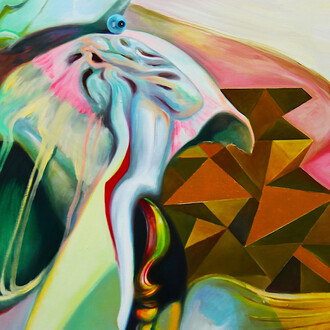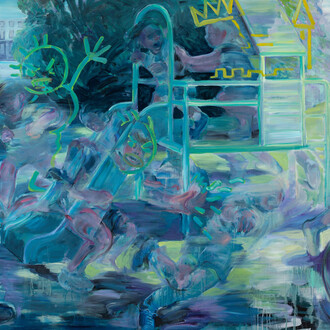New York…Fort Gansevoort will present Winfred Rembert: Refuge, its second exhibition of works by the late American artist Winfred Rembert (1945-2021). Showcasing twenty paintings made in the artist’s signature medium of carved, tooled, and painted leather, the exhibition will elucidate the themes of community, spirituality, and music as touchstones of Rembert's autobiographical artmaking.
Born in Americus, Georgia and raised by his great-aunt in nearby Cuthbert, Georgia, Rembert began working in the cotton fields at a young age and received limited formal education. The circumstances of his upbringing as a Black American in the Jim Crow South propelled him into the fight for equality through the Civil Rights Movement. While fleeing assailants during a peaceful protest, he used a nearby car to escape from harm, which resulted in his unjust incarceration from 1967-1974. Rembert’s unique technique of carving and tooling leather is a craft the artist learned from a fellow inmate during seven years of hard labor in the Georgia prison system. Nearly 20 years after his release, at the age of 51, Rembert was encouraged by his wife to create narrative paintings on leather that document the harrowing experiences of his youth and celebrate the people and places of the Black communities in which he lived.
Divided into three sections, the Fort Gansevoort exhibition will highlight Rembert’s depictions of music and spirituality, leisure activities, and community gathering spaces. His colorful genre scenes, filled with vibrant activity, illuminate the ways in which the artist found levity and refuge from the hardships he experienced growing up in the segregated South.
Music played a vital role in Rembert’s social and spiritual life, serving as an important source of inspiration for his artistic production. Many of his paintings depict animated figures dancing to live bands playing in the cabarets and juke joints that the artist frequented as a teenager, while other compositions are populated by field workers singing spirituals in the cotton fields.
Ben Shorter IV (2010) depicts a lively band playing jazz music on a stage while joyous spectators dance below. Ben Shorter’s band played in many of the clubs in and around Cuthbert, Georgia during Rembert’s youth. In this and other exhibited paintings, the artist depicts the band members dressed in their distinctive fashion of matching red suits. Through the brightly colored clothing and energetic dance moves of his subjects, Ben Shorter IV celebrates the creative modes of self-expression that Rembert witnessed and admired in the juke joints he frequented as a teenager and young adult.
In Leaning on the everlasting arms (2007), the subjects are arranged in three horizontal registers which echo the lined pattern of sheet music. The figures are superimposed with musical notes reinforcing this visual analogy between rows of cotton and rows of musical notation. A dense accumulation of white circles of cotton covers the remainder of the surface. The varied body language of the workers adds to the painting’s rhythmic quality. Like the lyrical repetition featured in the hymn "Leaning on the Everlasting Arms,” after which Rembert titled his work, the layering of forms creates a dynamic visual counterpoint within the composition.
In Cotton wagon race (2012), one of Rembert’s most complex and detailed compositions, the artist envisions a scene in which two field hands, neglecting their work, have seized cotton wagons for their own amusement. The hats flying off the heads of the wagon drivers emphasize the speed of the racing vehicles and embody the carefree energy of the scene. Beyond the fence, workers engaged in the arduous labor of cotton picking provide a visual foil to the activities of the main figures who relish in their liberation (even if only temporarily). Rembert’s articulation of the horses’ leather bridles and reins—rendered with precise stitching—exemplifies his own mastery of his chosen leather craft. The use of illusionary perspective, along with the nuanced details of the surrounding environment, asserts Rembert’s rightful place in the canon of Contemporary Black American narrative painting.
In the preface to the artist’s Pulitzer Prize-winning memoir Chasing me to my grave, he stated, “I want Black people to be proud of what their families sacrificed and how they survived. I want people who have lived in the South to talk about their history.” The stories chronicled in Rembert’s captivating paintings do not relay a history of a people defined by their trauma but of individuals characterized by their ingenuity and self-determination. His nostalgic scenes emphasize depictions of joyous Black life in the Jim Crow South from a personal perspective. Rembert's paintings are a testament to levity, humor, and love as universal forms of refuge.
















